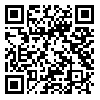Volume 14, Issue 4 (Oct & Nov 2020)
payavard 2020, 14(4): 371-382 |
Back to browse issues page
Download citation:
BibTeX | RIS | EndNote | Medlars | ProCite | Reference Manager | RefWorks
Send citation to:



BibTeX | RIS | EndNote | Medlars | ProCite | Reference Manager | RefWorks
Send citation to:
Einollahi N, Safdari R, Gholamzadeh M, Haghshenas E, Masourian H. An Overview of the Features and Content of Dermatology Mobile Applications. payavard 2020; 14 (4) :371-382
URL: http://payavard.tums.ac.ir/article-1-7043-en.html
URL: http://payavard.tums.ac.ir/article-1-7043-en.html
1- Professor , Department of Laboratory Sciences, School of Allied Medical Sciences, Tehran University of Medical Sciences, Tehran, Iran
2- Professor, Department of Health Information Management, School of Allied Medical Sciences, Tehran University of Medical Sciences, Tehran, Iran
3- 3- Ph.D. Candidate in Medical Informatics, School of Allied Medical Sciences, Tehran University of Medical Sciences, Tehran, Iran
4- Master of Science in Health Care Management, School of Allied Medical Sciences, Tehran University of Medical Sciences, Tehran, Iran
5- Master of Science in Health Information Technology, School of Allied Medical Sciences, Tehran University of Medical Sciences, Tehran, ,hmasoorian@gmail.com)
2- Professor, Department of Health Information Management, School of Allied Medical Sciences, Tehran University of Medical Sciences, Tehran, Iran
3- 3- Ph.D. Candidate in Medical Informatics, School of Allied Medical Sciences, Tehran University of Medical Sciences, Tehran, Iran
4- Master of Science in Health Care Management, School of Allied Medical Sciences, Tehran University of Medical Sciences, Tehran, Iran
5- Master of Science in Health Information Technology, School of Allied Medical Sciences, Tehran University of Medical Sciences, Tehran, ,
Abstract: (2055 Views)
Background and Aim: Mobile-based programs have been developed as tools to help both patients and physicians in various fields especially in dermatology. Therefore, the main objective of this study was to review the features and contents of dermatology applications.
Materials and Methods: The methodology was comparative and descriptive. Applications in the field of dermatology were evaluated and compared through this research. Inclusion criteria included applications that have been downloaded more than 100 times in Google Play and App Store and applications designed in diagnosis in various fields of dermatology such as treatment, management, remote consulting, and self-care areas. Exclusion criteria included those developed before 2010 and those related to the non-dermatology areas. Besides, different features were considered for comparison based on literature review and expert consultation. Next, the recognized applications were reviewed and compared based on determined categories.
Results: Based on criteria, a total of 33 applications were identified through searching. Of these, 33.3% of Apps were in the field of education, and 24.2% were in self-care. Regarding disease, applications were categorized into nine different domains. Of these, 61% of applications were covering different types of skin diseases. Also, in examining the frequency of the features of the evaluated programs, providing recommendations and suggestions with 57.57% and educational contents and the possibility of uploading images with 51.51%, respectively, had the highest frequency among the features of the programs.
Conclusion: Analysis showed that education and self-care domains have a high rank among others. It indicates that developing such applications could facilitate patient education and self-management by himself or caregivers. However, this area needs more attention and the using health information technology capabilities to make applications smarter in this area.
Materials and Methods: The methodology was comparative and descriptive. Applications in the field of dermatology were evaluated and compared through this research. Inclusion criteria included applications that have been downloaded more than 100 times in Google Play and App Store and applications designed in diagnosis in various fields of dermatology such as treatment, management, remote consulting, and self-care areas. Exclusion criteria included those developed before 2010 and those related to the non-dermatology areas. Besides, different features were considered for comparison based on literature review and expert consultation. Next, the recognized applications were reviewed and compared based on determined categories.
Results: Based on criteria, a total of 33 applications were identified through searching. Of these, 33.3% of Apps were in the field of education, and 24.2% were in self-care. Regarding disease, applications were categorized into nine different domains. Of these, 61% of applications were covering different types of skin diseases. Also, in examining the frequency of the features of the evaluated programs, providing recommendations and suggestions with 57.57% and educational contents and the possibility of uploading images with 51.51%, respectively, had the highest frequency among the features of the programs.
Conclusion: Analysis showed that education and self-care domains have a high rank among others. It indicates that developing such applications could facilitate patient education and self-management by himself or caregivers. However, this area needs more attention and the using health information technology capabilities to make applications smarter in this area.
Send email to the article author
| Rights and permissions | |
 |
This work is licensed under a Creative Commons Attribution-NonCommercial 4.0 International License. |





